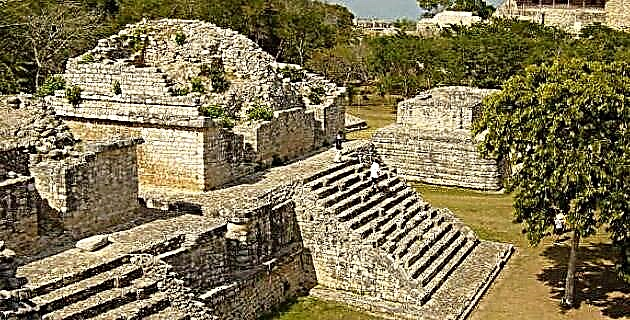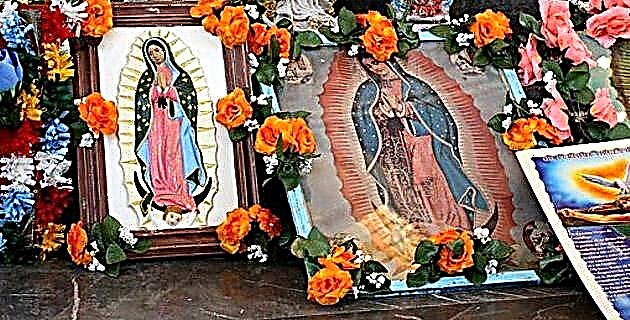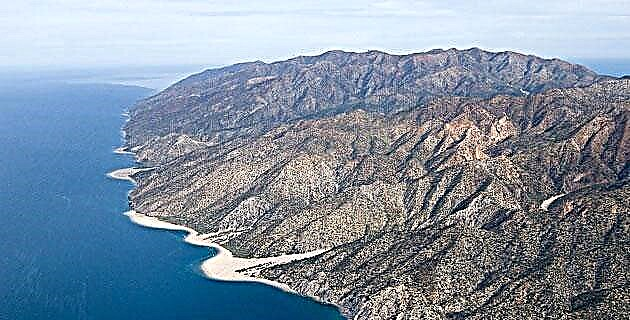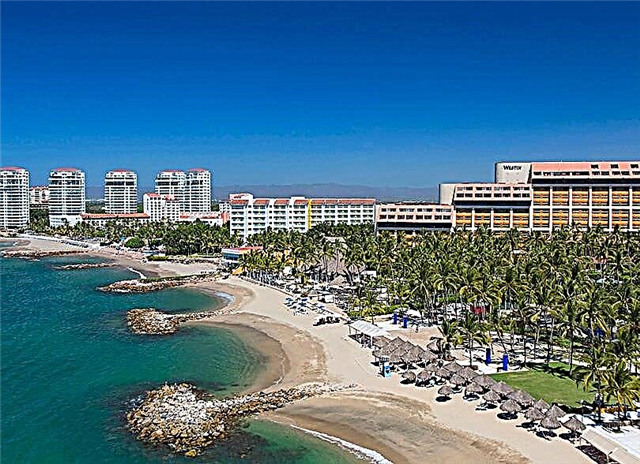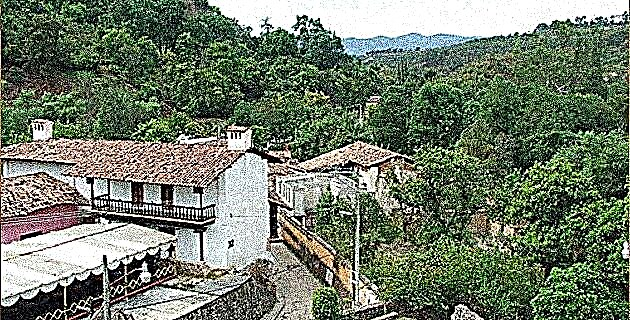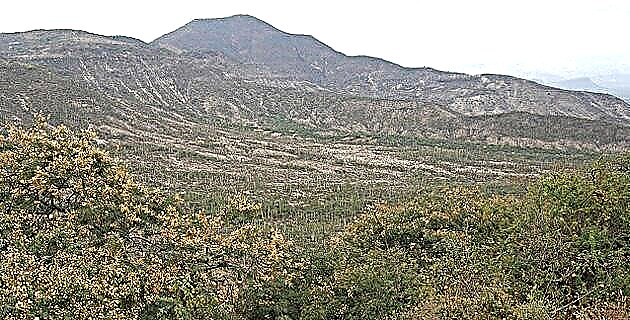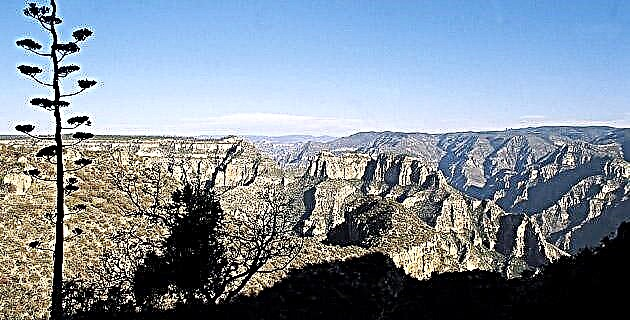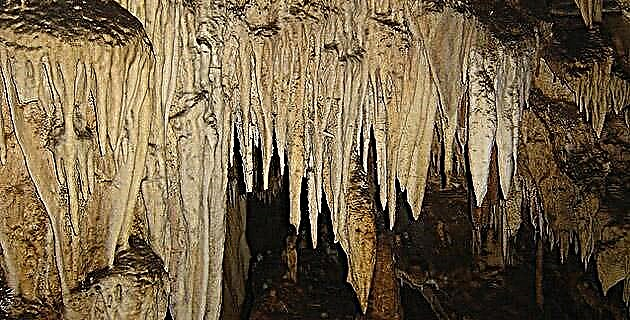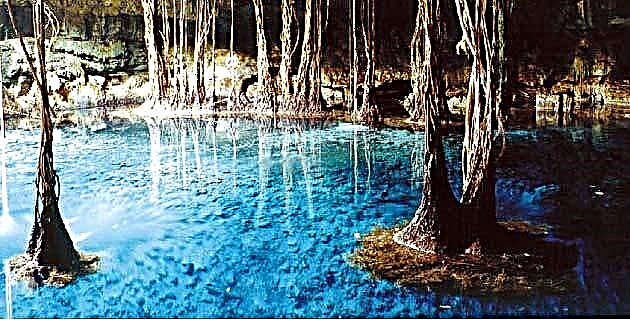
Campeche has traditionally been called the Mysterious City, because under its foundations there are caves and underground galleries that in the past were probably used as a refuge and hidden exits to escape the pirates who frequently looted it in the 16th and 17th centuries.
Campeche has traditionally been called the Mysterious City, because under its foundations there are caves and underground galleries that in the past were probably used as a refuge and hidden exits to escape the pirates who frequently looted it in the 16th and 17th centuries.
In a recent expedition from unknown Mexico we explored a huge variety of cenotes in the Yucatan peninsula where it is estimated that there are more than 7,000, a unique paradise for adventure and discovery.
Excited to start this adventure, we prepare the mountain bike equipment and move to the small town of Miguel Colorado located 65 km from the capital and 15 km from Escárcega. The topography is not mountainous, however it is very rewarding to pedal through the dense jungle.
In Miguel Colorado they welcomed us very kindly and José, our guide, joined the hiking team. In a dilapidated pool hall, Pablo Mex Mato, who has been exploring the state for more than 15 years, took out the maps and showed us the location of the cenotes and the route to pedal between each of them.
THE BLUE CENOTE
Always on a bicycle, we walked along a muddy and stony path that took us through cultivated fields and pastures and then into the jungle; after 5 km we left the bicycle and started the walk along a path, from where we could see the brilliant water mirror of the Cenote Azul. The landscape is fascinating, the body of water is surrounded by large rock walls 85 m high, covered with jungle and trees that are reflected in the water; The diameter of the cenote is 250 m, in which you can swim, since the path reaches the shore.
The cenotes are a natural refuge for flora and fauna, especially during the dry season, since they are the only source of water for the species that live in the surroundings.
On the bed of the cenote live black-band mojarras and a small species of oyster, a favorite of the locals. The cenotes of Campeche do not have infrastructure like those of Yucatan and Quintana Roo, since they are remote and wild places, hidden in the thick of the jungle where it is best to be accompanied by guides who know the area.
CENOTE OF THE DUCKS
From the Cenote Azul we continued with the walk, ascending the hills that surround it, while José, our guide, was making his way through the jungle with his machete. The fantastic jungle canopy is made up of countless species of flora and some of the trees are home to various families of bromeliads and orchids.
After walking 400 m we arrive at the impressive Cenote de los Patos, where many of these birds certainly live, such as the Patillo pijiji native to the region and two migratory species such as the Teal and Moscovich Duck, who came to stay and make this cenote their home.
The Cenote de los Patos has a diameter of 200 m and the only way to get to the water would be to rappel; so far no one has gone down to the bottom as there are large swarms of African bees on the walls, which can be a serious threat if you want to descend.
There is no record about who discovered these cenotes, about 10 are known in the area. It is known that they were the water supply during the time of the chicle exploitation and the logging boom of the state. They were later rediscovered during the installation of the railway. There is still much to explore and search for underground connections, a task reserved for cave divers.
Once we complete the walk we get back on the bikes and head back to Miguel Colorado. This town 15 years ago was dedicated to the extraction of chewing gum, today only some continue with this trade, most of them are dedicated to the construction of sleepers to maintain the freight train track.
CENOTE K41
We arrived at José's house, where his wife Norma invited us to eat chicken in mole accompanied by delicious handmade tortillas.
Once we got our energy back, we got back on the bikes and pedaled for a kilometer and a half to the entrance of a path that took us to Cenote K41, so called because it is located on the banks of the train track at km 41.
Cenote K41 is undoubtedly the most impressive in the area, it is hidden in the jungle and in order to take some photographs it was necessary to cut several branches with the machete.
The depth of the K41 is impressive, it has close to 115 m of vertical throw and is practically virgin, guarded by countless swarms of African bees. But the best was yet to begin, around 7:00 p.m. we had the opportunity to enjoy a unique spectacle of nature. Inside the basement a strange buzzing began to be heard and before our eyes a dense moving cloud appeared barely illuminated by the sunset light, they were bats, thousands and thousands that came out forming an incredible column, for them it was time to eat. For 10 minutes we were stunned by such a spectacle, they almost collided with us, we only heard the flapping and high-pitched screams.
On the way back to Miguel Colorado we pedaled lighting the way with a headlamp. For the bats the night began and for us a wonderful day of adventure in the wild territory of Campeche ended.
Source: Unknown Mexico No. 302 / April 2002

